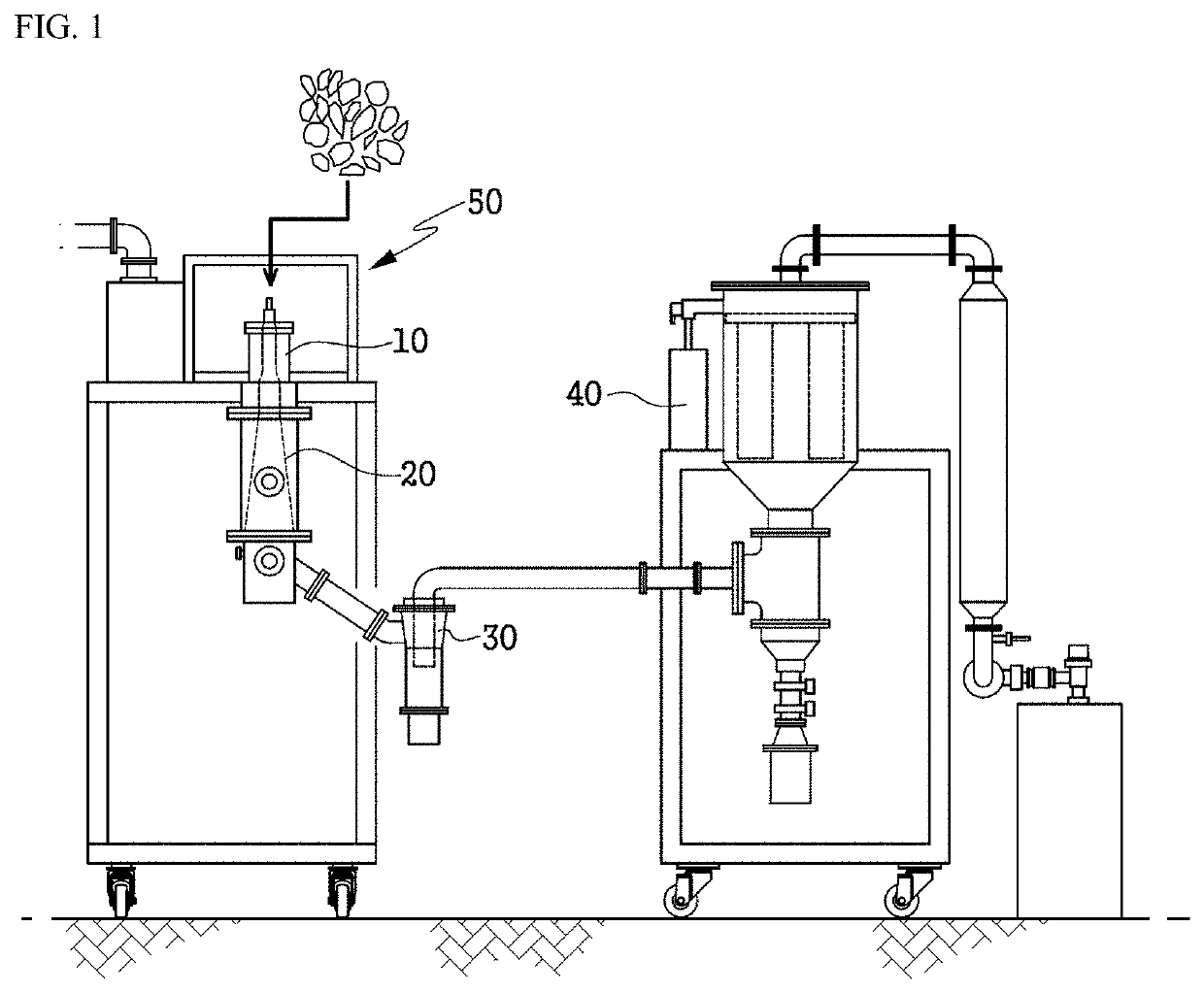Method for synthesizing copper sulfide nano powder using plasma synthesis
a technology of plasma synthesis and nano powder, which is applied in the direction of copper oxide/halide, animal husbandry, botany apparatus and processes, etc., can solve the problems of ineffective extinct strains, reduced natural performance of copper, and inactive use, so as to reduce antibiosis and sterilization.
- Summary
- Abstract
- Description
- Claims
- Application Information
AI Technical Summary
Benefits of technology
Problems solved by technology
Method used
Image
Examples
experimental example 1
Performing Thermal Plasma Using CuO+S
[0084]In the experimental example, for replacing high-priced CuS, a nano copper sulfide powder was synthesized using low-priced CuO manufactured through a conventional wet process.
embodiments 1 to 5
[0086]A CuO powder (See comparative embodiment 1) manufactured through a conventional wet process and having a particle size ranged from 75 nm to 52,000 nm was injected through a raw material supply at an injection speed of 3 kg / hr, and sulfur S ranged from 10 weight % to 50 weight % with respect to CuO of 100 weight % was additionally injected at an injection speed from 0.3 to 1.5 kg / hr. On condition that plasma power was ranged from 10 to 50 kW, a pressure was 250 Torr, and a gas flow rate was 150 LPM, copper sulfide nano powder was obtained through a thermal plasma process.
experimental example 2
Analysis of Particle Size, Morphology, and Component of CuO+S Powder Through Plasma Synthesis
[0089]The particle size, morphology, and component of CuS through plasma synthesis were analyzed by adding sulfur S to CuO ranging from 10 weight % to 50 weight % (see FIGS. 2 to 5). FIGS. 2 to 5 show an analysis result of morphology of CuO+S powder through SEM (Scanning Electron Microscope) and a content analysis of CuO+S powder through EDS (Energy-dispersive X-ray spectroscopy).
[0090]It was confirmed that while raw CuO (see comparative embodiment 1) was a plate-type shape and a spherical-type shape, the copper sulfide nano powder manufactured by adding sulfur S to CuO through plasma synthesis had uniform particle size of hexagonal shape. It was confirmed that the particle size (D10-D90) of the copper sulfide nano powder becomes decreased in comparison with CuO (see comparative embodiment 1), and become small to be uniform as the content of sulfur S is increased. In concretely, CuO powder (...
PUM
| Property | Measurement | Unit |
|---|---|---|
| pressure | aaaaa | aaaaa |
| particle size | aaaaa | aaaaa |
| weight % | aaaaa | aaaaa |
Abstract
Description
Claims
Application Information
 Login to View More
Login to View More - R&D Engineer
- R&D Manager
- IP Professional
- Industry Leading Data Capabilities
- Powerful AI technology
- Patent DNA Extraction
Browse by: Latest US Patents, China's latest patents, Technical Efficacy Thesaurus, Application Domain, Technology Topic, Popular Technical Reports.
© 2024 PatSnap. All rights reserved.Legal|Privacy policy|Modern Slavery Act Transparency Statement|Sitemap|About US| Contact US: help@patsnap.com










